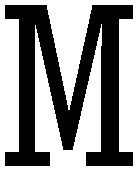Voor Paul Klee is een lijn een punt die een wandeling heeft gemaakt, zoals een klank zich uitvouwt tot een melodie. Kan men muziek vertalen in kalligrafie, en omgekeerd klank omzetten naar kleur en lijn? Het Japonisme in de kunsten van het einde 19de en begin 20ste eeuw zocht de directheid van het performatief en creatief gebaar uit de Japanse kalligrafie te herscheppen in muziek, schilderkunst en andere artistieke vormen. Het concert confronteert het Japanse kalligrafische gebaar live met muziek van componisten die sterk geïnspireerd werden door deze kunst, met een speciale focus op György Kurtág.
If for Paul Klee, the line is a point that has gone for a walk, the walk of a brush in calligraphy could be a sensory journey beyond the boundaries of the image itself. Can we translate a sound into calligraphy and vice versa? Japanese calligraphy has influenced and continues to influence Western art, from music to painting and many other arts forms. The technicity and immediacy of the gesture of writing makes it an art that comes close to the creative and performative gesture of musicians. The performance will present a program that combines the Japanese calligraphy with a music program dedicated to the composers who have been most inspired by this art, with a special focus on György Kurtág .
Vincenzo Casale historische klarinetten
Jan Michiels Pleyel, 1898
HIroyuki Nakajima kalligrafie
Claude Debussy
–
Et la lune descend sur le temple qui fût (1907)
–
Pagodes (1903)
–
Petit Pièce (19010)
–
Première Rhapsody (1910)
Alban Berg
–
Vier Stücke für Klarinette und Klavier (1913)
Francois Rasse
–
Lied (1921)
Michel Lysight
–
Tanka (2016)
György Kurtág
–
In nomine all’ongharese (2001)
–
Passio sine nomine (2015)
–
Couple égyptien en route vers l’inconnu (2013)

Samenwerking tussen KASK - Koninklijk Conservatorium en Artonov Festival Brussel

